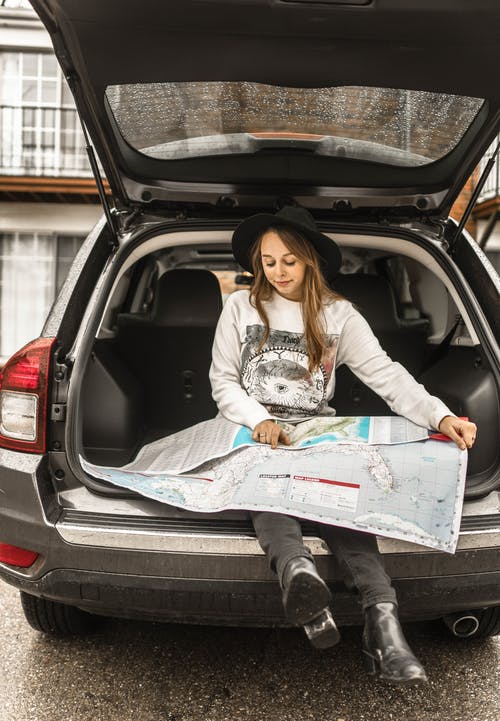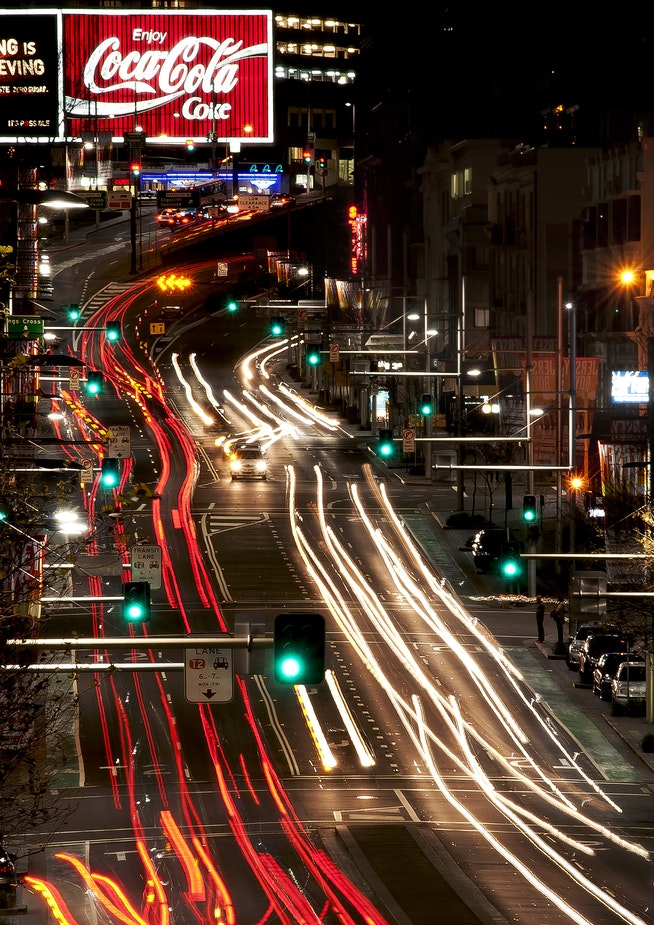IT USED TO BE that the only thing you needed to keep in mind when crossing a state border was make sure you had jettisoned any fruit, but the constantly changing road rules, and how much they vary from one state to another, can create problems for the unwary traveller.
Toll Roads.
The increasing number of toll roads can catch some motorists out. Once upon a time (and since you’re over 50, you’ll remember the days), you could simply roll on up to a toll booth, throw some coins in the tray and continue on your way. These days, in the interests of “efficiency” and “convenience”, toll roads operate on a cashless basis. No problem if you’re a local or regular user – you’ll have arranged an electronic tag in your vehicle that automatically detects your vehicle and what toll roads it is on and automatically charges your account. If you’re in a hire car, it will probably be fitted with an E-tag, but make sure you check with your car rental company before assuming it’s taken care of (and be aware that the tolls will be added to your final account – check that they won’t be loaded with additional “service fees” or “handling fees” over and above the standard toll charges, and get it in writing).
If you’re using your own car, you’ll need to arrange a temporary pass, either before you go, or within three days of travelling on a toll road (and this causes its own problems if you inadvertently use a toll road). Needless to say, there is no consistency of the types of passes you need in different states; the one that best suits your intended usage will need some research on your part. Motoring associations usually have a website that will explain your options in each state and if you know where you’ll be travelling, arranging a pass beforehand is the best way to go.
Fail to organise a pass and cameras will record your number plate and the registered owner will receive an invoice in the mail, along with additional fees for processing. And if you’re on an extended trip, by the time you receive the invoice, the time for payment without additional penalty may well have expired.

Variable road rules.
One of the biggest headaches for motorists venturing interstate is being aware of different road rules in different jurisdictions – what’s legal at home may well earn you a fine and demerit points in the state you’re visiting.
It’s stupid, dangerous, unnecessary and frustrating.
Almost 20 years ago, all the states and territories gathered together to standardise road rules, but inevitably, they couldn’t agree on some, and others have since been amended or changed. It’s also worth remembering that penalties can vary substantially from one state to another – although why the same offence should be considered more serious in one state than another is a mystery that will never be resolved.

Some of the main differences to be aware of (and we strongly suggest you look closely at the road rules for wherever you intend to drive before just assuming they will be the same as at home) include speed limits.
Default speed limits (the speed limits that will be applied if there is no sign) are a constant source of confusion. In the Northern Territory, for instance, the default speed limit in built-up areas if there is no speed sign indicating otherwise is 60 km/h. Everywhere else it’s 50km/h. On the open road, both NT and WA apply a default limit of 110km/h, while all other states have a default limit of 100 km/h unless signposted differently. Just to add to the confusion, a few roads in the NT have a signposted limit of 130km/h and one stretch of the Stuart Highway is completely derestricted, meaning you can travel at whatever speed you deem appropriate (but you can still be booked if your speed is considered to be dangerous or inappropriate, or otherwise unsafe).
The recent introduction of speed limits when passing emergency vehicles with flashing red and blue lights is also inconsistent. In South Australia, the speed limit is a totally inappropriate (and potentially dangerous) 25km/h, even on 110km/h freeways and highways. This applies even if there are multiple lanes and the vehicle is in the emergency stopping lane or otherwise off the road. If there is a median strip between your vehicle and the emergency vehicle, you are not required to slow down. On the other hand, nobody has been able to clarify for us how far before and after the emergency vehicle the speed limit applies. In other states, the speed limit when passing an emergency vehicle displaying flashing red and blue lights is 40km/h.
The law also varies even if an emergency vehicle approaches. In some states, you are required to move out of the way “if safe to do so” In Queensland, this even extends to driving through a red light under certain circumstances, or onto the wrong side of the road. However, in WA and Tasmania, drivers are not permitted to break the law to make way for emergency vehicles.
In Victoria, it’s legal to make a U-turn at traffic lights (unless there is a sign stating that it isn’t). Perversely, the opposite is the case elsewhere, a U-turn at traffic lights is illegal unless there is a sign saying that it is permitted.
When passing cyclists it is law that you leave a one metre gap between your vehicle and the cycle when overtaking, or 1.5 metres when the speed limit is more than 60km/h. At last check, this applied in Queensland, New South Wales, South Australia and the ACT, but not Victoria, WA or the NT. South Australia introduced a truly stupid exemption for motorists overtaking cyclists that permitted them to cross double lines “when safe to do so” – a proviso that most motorists clearly don’t understand and certainly don’t observe. Whether it’s law or not, it is common sense to leave a safe gap between yourself and any cyclists you are overtaking. And even when you may or may not cross double or undivided centre lines varies: in NSW you may cross a dividing line to enter or leave a property or road “by the shortest route” (for example, when coming out of a service station or shopping centre, unless there is a sign specifically stating you can’t). Drivers can also cross any type of dividing line when turning right at an intersection, and drivers in the NT and WA are also allowed to cross double lines when entering or leaving a property or different road, but in Victoria, Queensland, SA and Tasmania, it’s illegal.
In Victoria, it is an offence to leave a bike rack attached to the rear of your car unless it is carrying bikes.
Some states (Queensland, NSW, Victoria and Tasmania at last check) have made it an offence to leave your vehicle unlocked or to leave the windows down by more than 2cm if you are more than 3m away from it. You also must ensure that the car is switched off and, if there is nobody over the age of 16 left in the vehicle, remove the keys from the ignition.

Registration labels.
During the period when some states had ceased issuing registration labels that had to be affixed to the vehicle while others still issued them, there were real issues with police delaying out-of-state motorists and threatening to fine them for not displaying a current registration label, even though it was not required in their home state. There were even stories of some motorists being refused permission to continue on their way until they could prove their vehicle was registered and insured. Now that all states have ceased issuing registration labels, this should no longer be a problem, but there have been reports of motorists being delayed while police check that a vehicle is registered. We’d recommend carrying some proof of current registration. Also, states have different rules about which vehicles are still required to display a registration label (NSW requires it of all heavy vehicles more than 4.5 tonnes gross vehicle mass, vehicles registered under the Conditional Registration Scheme and vehicles that have been issued an Unregistered Vehicle Permit. Queensland, on the other hand, doesn’t require trucks to display a label unless registered under the Federal Interstate Registration Scheme).
Carrying your driver’s licence.
Some states require you to have your driver’s licence on you at all times when driving; others will give you a period of time to produce it at a police station. Queensland requires provisional or learner drivers to carry their licence with them at all times and show it to a police officer if asked, but full licence holders are given 48 hours to present it to a police station if they aren’t able to show it when asked. In SA, you can show a police officer a digitised licence on your smartphone. In NSW, not carrying your licence and showing it on demand can cost you $99 and one demerit point. In Victoria, drivers over 26 don’t have to have a licence with them but, if asked to show one, have seven days to present it to a police station. And so it goes …

Learners and P-platers.
If you will have a learner or P-plater operating your vehicle, once again, what they are and are not permitted to do varies from state to state. Towing restrictions, speed limits, use of mobile phones by supervisors can all vary. Once again, check the rules carefully before assuming that the rules applying to a learner driver or P-plater are the same as at home.
So now you should be completely and utterly confused and probably never planning to drive cross a state border ever again.
The whole shemozzle is one that should be resolved and probably never will be (we’re told things aren’t any better in the US, so what hope for Australia?)
All we can recommend is that you do as much research online as you can, and be prepared to stand up for your rights if you are penalised for doing the wrong thing despite making every effort to get it right. As we know, ignorance of the law is no defence, but when the law is so utterly confusing, how can any of us be expected to comply?
Do you have any examples of conflicting road rules? Or personal experience of being penalised for breaking a road rule that was legal in your home state? Let us know.
Reader Feedback: We’ve already had a response from an alert WA reader who points out that it’s still legal to use radar detectors in WA, but illegal in other states. That could be an expensive oversight if you inadvertently crossed the border without removing your detector – it’s a very large fine and includes impounding the detector in all other jurisdictions. Thanks for the feedback, MSM!
